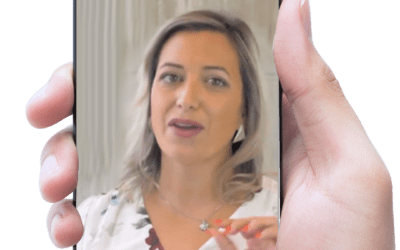Here’s How to Get “Google” Right
In 2019, no one would deny the power of the Google search engine. With more than three billion (with a B!) daily queries, the most-used search engine in the world has itself reached that holy grail of marketing: its name has become synonymous with its function. When people need information, they Google it. As B2Bs, we need to pay attention. The power of Google’s search function alone is awesome, but add to it other services like ads, alerts, and analytics, and you’ve got a toolkit that can either benefit or bury you—and the difference comes down to your marketing. Get up to speed on Google and learn how to harness its power.
Using Google to kickstart lead generation
The first step in the marketing and sales funnel is “creating awareness”—simply put, you can’t bring in more customers without first making them aware of your business. There are numerous strategies to stimulate awareness and a surprising number of them are in some way connected to Google.
Since its introduction in the late-90s, Google Search has absolutely dominated the market. According to Statista, the search giant has maintained close to 90% of the global market share since 2010. Perhaps even more impressive, more than 50% of searchers click one of the first three links on Google’s results page, according to 2018 statistics from Smart Insights. All of this is to say that if potential customers are looking for a product or service like yours, chances are they’re Googling it. Your job, then, is to make sure your business name comes up when they do so.
Getting to number one
Obtaining (and maintaining) a high ranking in search results is no easy feat, but there are tried and true steps towards achieving it:
-
Identify and integrate your keywords into your web copy.
-
Regularly publish high-quality content on your site to maintain expertise and freshness.
-
Make sure your website’s metadata is complete and will be effective in helping people find your site.
-
Get high-quality websites to link back to your website—the more you have, the more your site is recognized as expert and valuable.
-
Optimize your design and page layout to be fast and mobile-friendly.
All of the above steps will help you boost your ranking organically, but in today’s highly competitive market it’s prudent to double down by paying for ads. As with all things marketing, this works best with a strategy. We’ve found that while running PPC ads can be costly and difficult unless you have an expert on-hand, the ROI with retargeting ads is high. These ads display as many (or few) times as you like over a certain window of time following a prospect visit to your site, which works extremely well for B2B purposes. We run them for most of our clients. Whatever your strategy, be sure to set aside some of your marketing budget for Google ads, which appear alongside search results, to ensure your place on the page.
Nurture those leads!
Don’t let all the hard work driving traffic to your page steal focus from the real task: nurturing your leads so they return again and again.
Modern buyers are internet-savvy and want to do their own research. And of course, websites are where they’re getting their information: The 2014 State of B2B Procurement Study by Acquity Group measured where buyers were getting their online information on products. The results? Supplier websites topped the list at 83%, followed by Google searches (77%), user reviews (42%), and third-party websites such as Amazon Supply (34%).
Getting your message into these spaces is critical, but even so, it’s unlikely that a first-time visitor is going to buy from you on the spot. According to Invespcro, nearly 80% of new leads never translate into sales. But, companies that excel at lead nurturing can generate 50% more sales-ready leads at a 33% lower cost. Nurtured leads also make 47% larger purchases compared to non-nurtured leads.
Nurturing leads can take many forms, but at its simplest it means staying in touch with prospects and gently guiding them through the education, consideration, and selection process. There are numerous ways to achieve this. Let’s get started:
-
Ensure your website content and brand messaging are on point: consistent, impactful, and effective.
-
Educate your prospects by delivering quality and comprehensive education about your product or service.
-
Stay in touch with your prospects by sending them value-added content via social and email—the kind of content they can actually use.
-
Build a nurturing environment designed for customer feedback and continually responding with the right information.
It’s no surprise that buyers research online and in many cases eventually purchase products and services there too. With its massive market share, Google continues to play a significant part in the marketing and sales process. As businesses, we’ve got to be nimble. There is no single marketing tactic that will work for every business, every time, and this is why taking a comprehensive, multi-tactic approach to marketing and sales is imperative. With a little planning and patience, we can harness the power of Google to attract and nurture leads, boost our customer base and our annual sales.


